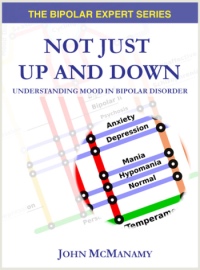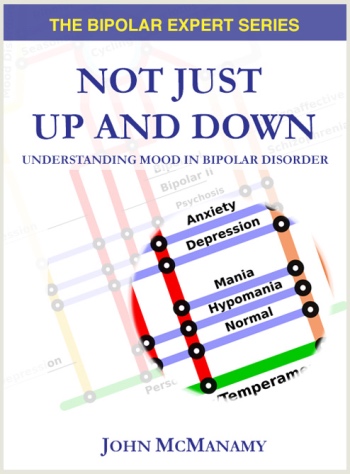Personality Disorders - Emphasis on Disorder
 |
Can you tell borderline from antisocial? Neither can the DSM.
|
Here's a little quiz for you.
The DSM-5 and personality. Following are symptoms taken from the four DSM-IV "Cluster B" personality disorders: Antisocial, Borderline, Histrionic, Narcissistic. See if you can match the symptom to the disorder. Answers and commentary further down:
My New Book!

Purchase now.
1 "Is uncomfortable in situations in which he or she is not the center of attention."
2 "Requires excessive admiration."
3 "Impulsivity or failure to plan ahead."
4 "Impulsivity in at least two areas that are potentially self-damaging (e.g., spending, sex, substance abuse, reckless driving, binge eating)."
5 "A pattern of unstable and intense interpersonal relationships characterized by alternating between extremes of idealization and devaluation."
6 "Considers relationships to be more intimate than they actually are."
7 "Lack of remorse, as indicated by being indifferent to or rationalizing having hurt, mistreated, or stolen from another."
8 "Lacks empathy: is unwilling to recognize or identify with the feelings and needs of others."
9 "Displays rapidly shifting and shallow expression of emotions."
10 "Identity disturbance: markedly and persistently unstable self image or sense of self."
11 "Has a sense of entitlement, i.e., unreasonable expectations of especially favorable treatment or automatic compliance with his or her expectations."
12 "Consistent irresponsibility, as indicated by repeated failure to sustain consistent work behavior or honor financial obligations."
13 "Shows arrogant, haughty behaviors or attitudes."
14 "Irritability and aggressiveness, as indicated by repeated physical fights or assaults."
15 "Inappropriate, intense anger or difficulty controlling anger (e.g., frequent displays of temper, constant anger, recurrent physical fights)."
Answers
1 Histrionic; 2 Narcissistic; 3 Antisocial; 4 Borderline; 5 Borderline; 6 Histrionic; 7 Antisocial; 8 Narcissistic; 9 Histrionic; 10 Borderline; 11 Narcissistic; 12 Antisocial; 13 Narcissistic; 14 Antisocial; 15 Borderline.
Give yourself a passing grade if you beat the laws of probability. In the course of assembling this quiz, I couldn’t keep track of the correct answers, myself. I was obliged to keep rechecking and rechecking again ... and again. Clearly, this exercise is telling us something.
Moving Right Along ...
Okay, now try matching these DSM descriptions to the same list of disorders:
1 "A pervasive pattern of excessive emotionality and attention seeking, beginning by early adulthood and present in a variety of contexts ..."
2 "A pervasive pattern of instability of interpersonal relationships, self-image, and affects, and marked impulsivity beginning by early adulthood and present in a variety of contexts ..."
3 "There is a pervasive pattern of disregard for and violation of the rights of others occurring since age 15 years ..."
4 "A pervasive pattern of grandiosity (in fantasy or behavior), need for admiration, and lack of empathy, beginning by early adulthood and present in a variety of contexts ..."
Easy, right? Here's the answers:
1 Histrionic; 2 Borderline; 3 Antisocial; 4 Narcissism.
But if this quiz was so easy, why was the first one so difficult? Basically, it seems we know a narcissist or someone with borderline when we see one, sort of, until we start digging deeper. Then we find ourselves in a thicket of overlapping and interchangeable symptoms. Thus, for antisocial and borderline, respectively:
"Irritability and aggressiveness, as indicated by repeated physical fights or assaults."
"Inappropriate, intense anger or difficulty controlling anger (e.g., frequent displays of temper, constant anger, recurrent physical fights)."
The narcissist also experiences rage (against those who poke holes in their ego), though the DSM doesn't mention this. Obviously, the narcissist is living in a world of self-delusion ("believes that he or she is 'special' and unique"), but so is someone living with borderline ("identity disturbance", "alternating between extremes of idealization and devaluation"), and histrionic ("considers relationships to be more intimate than they actually are"). Likewise, further reading reveals that those with antisocial have difficulty separating out fantasy from reality.
Here, we're looking at a fundamental failure in perception, of people living in universes of their own imaginations, with highly distorted views of themselves and the people around them. Something is obviously not processing right in the cortical areas of the brain.
Then there there is the matter of runaway emotion:
"Impulsivity in at least two areas" (borderline), "impulsivity or failure to plan ahead" (antisocial), "uncomfortable in situations ..." (histrionic), "often envious of others" (narcissistic).
Or it could be a deficit of emotion:
"Shallow expression of emotion" (histrionic), "chronic feelings of emptiness" (borderline), "lack of remorse, as indicated by being indifferent ..." (antisocial), "lacks empathy" (narcissistic).
Thus, faulty perception meets unregulated emotion. Worlds collide, strange behavior happens. It's almost as if we are talking about one disease rather than four separate entities, and maybe we truly are.
True, so-called "normal" people have their moments they would like to forget, as well. But in a reasonably operational brain, the thinking areas pick up that something is amiss, and we work at changing our behavior. With personality disorders, we're dealing with "a pervasive pattern" rather than a mere episode. Again and again, the individual fails to come to terms with his or her thoughts and actions. Thus:
"Preoccupied with fantasies ..." (narcissistic), "rationalizing having hurt ..." (antisocial), "Is suggestible" (histrionic), "paranoid ideation" (borderline).
Two-way traffic, this time unregulated emotion meeting faulty perception, each feeding off the other, back-and-forth, back-and-forth. Rarely, it seems, does the brain reset to normal. Always, always, the neurons have something new to play with - new fantasies, new grievances, new thrills and spills - but always in the same old destructive patterns, beyond reason, beyond control.
Avoid these people like the plague, you think. Not so fast. If you happen to believe that the narcissist in your presence walks on water, then the two of you will get along just fine - until, perhaps, you start noticing that your new boon companion is wearing wet clothes.
Conversely, someone with borderline may think it is you who walks on water (and who are you to question his or her good judgment?) - that is, until he or she decides you are really the Antichrist, after all. Meanwhile, who isn't drawn to a histrionic enchanter or enchantress? - at least until we start thinking with our brains again. And, of course, chances are you will be profusely thanking that very charming (but antisocial!) individual you have just handed over your entire life savings to.
And there you are - the "normal" one in this relationship - left to pick up the pieces, humiliated, mystified, violated, abused, jilted, duped, conned, and perhaps much worse. These people definitely need therapy, but - thanks to them - you may need it more. But where does the therapist start? We may know a "classic" narcissist or borderline when we see one, but personality - much less life - is never that simple.
Diagnostic psychiatry can no more explain the reality of personality than theology can explain God. At best, psychiatry (and theology) can come up with an approximation of reality, based on what we know at the time. Clearly, a better approximation is needed. The people working on the DSM-5 recognized that, too.
Based on a series of blogs, Dec 2010, republished as three articles March 10, 2011.
 |
More articles on the DSM-5. |




